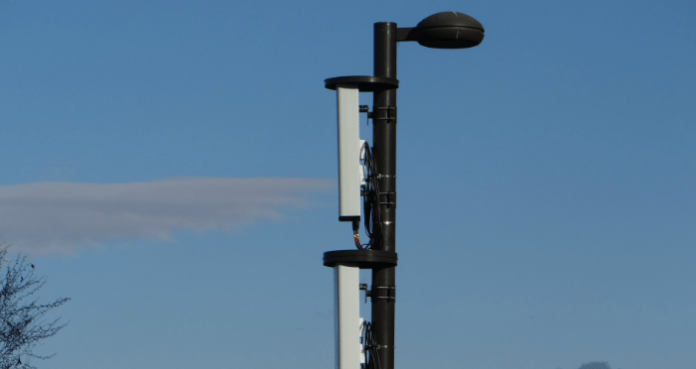NASHVILLE, Tenn.–Network densification efforts mean new strategies — and new challenges — for infrastructure installation, from zoning to painting, according to Ryan Peters, who is the manager for Seattle-based Legacy Telecommunications’ distributed antenna system and small cell division.
Peters, speaking at the National Association of Tower Erectors conference this week, shared insights on some of the ways that small cell and outdoor DAS deployments differ from traditional macro deployments — and it isn’t just a matter of smaller equipment, he warned.
Small cell deployments are “very heavy on the project management side,” Peters said, because carriers don’t have all the processes figured out themselves — so they rely heavily on their contractors to work everything out once a siting permit is acquired. Installation may require multiple teams of people from multiple agencies or companies to be at a site on the same day, including traffic control, the local utility and a subcontractor’s own crew, he said — so having good relationships are important, even if it can be difficult.
It’s crucial to get everything right in an installation on the first try, Peters said, because it can cost upwards of $10,000 to get all the people and equipment back to a site if a test or photograph is overlooked. He urged contractors to become fiber experts, because the amount of fronthaul fiber being installed means that technicians are now being asked for more fiber skills and additional testing of miles of fiber, not just a few hundred feet on a tower.
Peters said that working in the public right-of-way for small cell deployments also presents new issues — such as pedestrians who may walk into work areas on sidewalks, either by accident or deliberately. Even with traffic control measures, he added, vehicles driving by at close range and high speed also represent a safety hazard. New equipment, such as bucket trucks, is also likely to be needed for work on telephone poles; not just to get people, but also heavy infrastructure items, to the correct height. Peters said that to reduce risks and costs, his company tries to spend as little time in the right-of-way as possible and does most of its preparation for installation at its own shop, including painting components ahead of time.
Peters emphasized how quickly the industry is changing, even as permitting processes force a lengthy lag time between design and installation. In some cases, he said, his company is given deployment plans now that were drawn as much as three years ago and are already outdated for small cell technology, but the designs can’t be changed because it would require a new approval process. He encouraged carriers to communicate with their contractors about what testing and infrastructure installation changes they see coming in the near future, so that contractors can acquire the equipment and get their crews trained in preparation.

